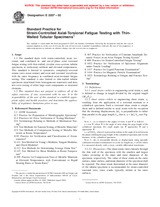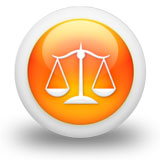We need your consent to use the individual data so that you can see information about your interests, among other things. Click "OK" to give your consent.
ASTM E2207-02
Standard Practice for Strain-Controlled Axial-Torsional Fatigue Testing with Thin-Walled Tubular Specimens
STANDARD published on 10.5.2002
The information about the standard:
Designation standards: ASTM E2207-02
Note: WITHDRAWN
Publication date standards: 10.5.2002
SKU: NS-44659
The number of pages: 8
Approximate weight : 24 g (0.05 lbs)
Country: American technical standard
Category: Technical standards ASTM
Annotation of standard text ASTM E2207-02 :
Keywords:
axial strain, axial stress, axial-torsional fatigue, in-phase axial-torsional fatigue test, out-of-phase axial-torsional fatigue test, shear strain, shear stress, strain-controlled testing, thin-walled tubular test specimen, ICS Number Code 19.060 (Mechanical testing)
Additional information
| Significance and Use | ||||||||||||||||||||||||||||||||||
|
Multiaxial forces often tend to introduce deformation and damage mechanisms that are unique and quite different from those induced under a simple uniaxial loading condition. Since most engineering components are subjected to cyclic multiaxial forces it is necessary to characterize the deformation and fatigue behaviors of materials in this mode. Such a characterization enables reliable prediction of the fatigue lives of many engineering components. Axial-torsional loading is one of several possible types of multiaxial force systems and is essentially a biaxial type of loading. Thin-walled tubular specimens subjected to axial-torsional loading can be used to explore behavior of materials in two of the four quadrants in principal stress or strain spaces. Axial-torsional loading is more convenient than in-plane biaxial loading because the stress state in the thin-walled tubular specimens is constant over the entire test section and is well-known. This practice is useful for generating fatigue life and cyclic deformation data on homogeneous materials under axial, torsional, and combined in- and out-of-phase axial-torsional loading conditions. |
||||||||||||||||||||||||||||||||||
| 1. Scope | ||||||||||||||||||||||||||||||||||
|
1.1 The standard deals with strain-controlled, axial, torsional, and combined in- and out-of-phase axial torsional fatigue testing with thin-walled, circular cross-section, tubular specimens at isothermal, ambient and elevated temperatures. This standard is limited to symmetric, completely-reversed strains (zero mean strains) and axial and torsional waveforms with the same frequency in combined axial-torsional fatigue testing. This standard is also limited to thin-walled tubular specimens (machined from homogeneous materials) and does not cover testing of either large-scale components or structural elements. 1.2 This standard does not purport to address all of the safety concerns, if any, associated with its use. It is the responsibility of the user of this standard to establish appropriate safety and health practices and determine the applicability of regulatory limitations prior to use. |
||||||||||||||||||||||||||||||||||
| 2. Referenced Documents | ||||||||||||||||||||||||||||||||||
|
We recommend:
Updating of laws
Do you want to be sure about the validity of used regulations?
We offer you a solution so that you could use valid and updated legislative regulations.
Would you like to get more information? Look at this page.




 Cookies
Cookies
